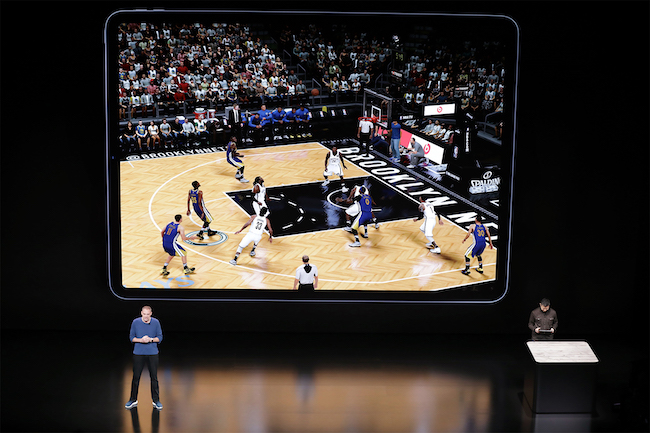
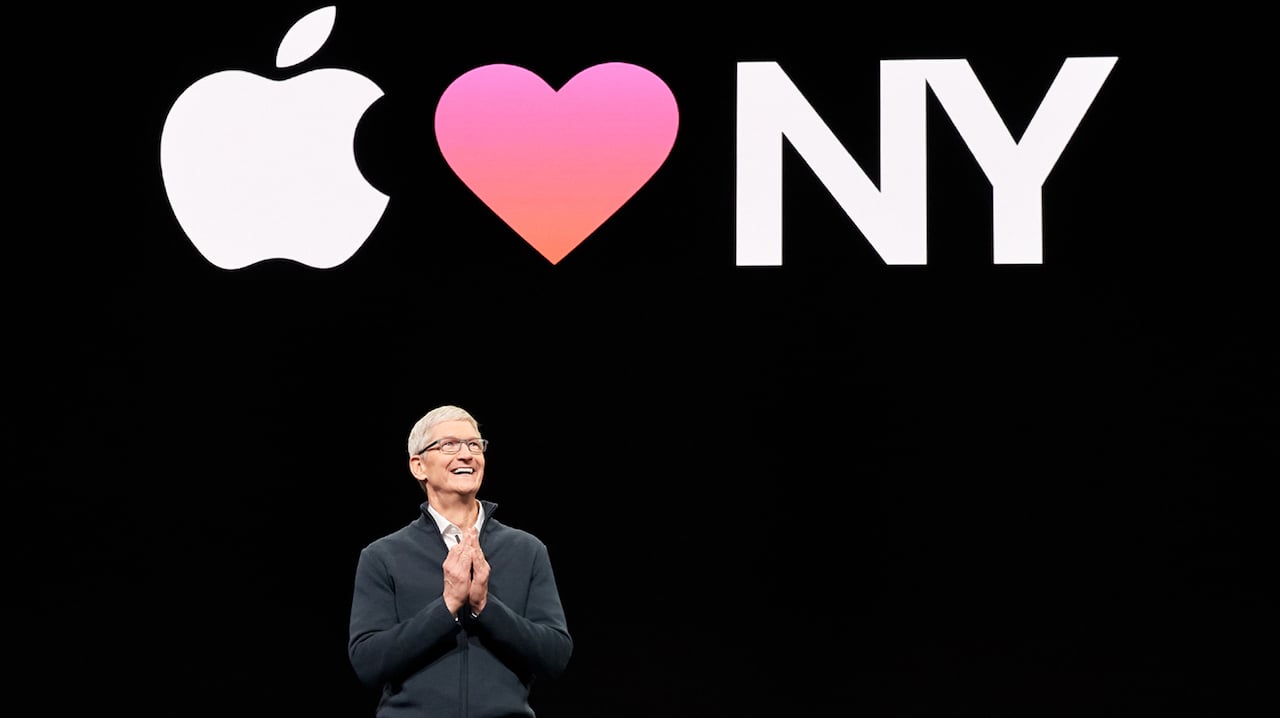 Tim Cook: Good things coming to those who wait
Tim Cook: Good things coming to those who wait
Everything Old is New Again: Tuesday’s Apple Event in New York squarely targeted the creative community with all-new designs for the iPad Pro and Mac mini, alongside a long-awaited refresh of the MacBook Air and more. By K Stewart.
First off, happy to say that all the products are immediately available for order with deliveries commencing from November 7th.
Mac mini 2018
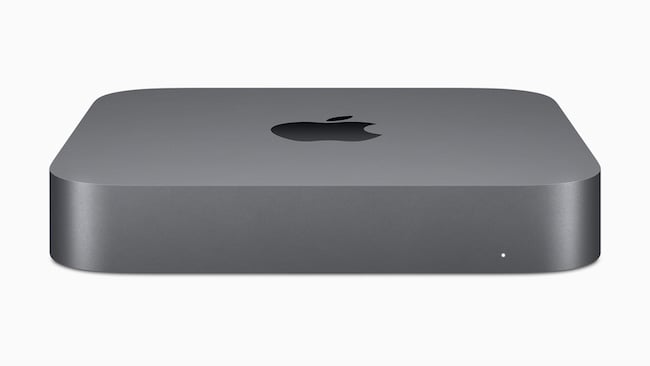
Four years without even a modest update had made the Mac mini’s future look uncertain. It launched in 2005 as the ideal device for PC switchers to swap out their desktop PC while keeping their existing monitor, keyboard and mouse. Today, laptops predominate so that usage scenario is vanishingly small.
Enter the Mac mini 2018 with a dramatic leap in pricing more than matched by some impressive specs and an all-new internal design. Squarely aimed at professionals (creative and otherwise) there’s a starting price of £799 for a 3.6GHz Quad-Core 8th generation i3 CPU, 8GB of RAM and 128GB of PCie-based SSD storage. For £300 more, you can start with a 3.0GHz 6-Core i5 processor with Turbo Boost up to 4.1GHz and double the storage. 2666MHz DDR4 RAM can be specified up to 64GB and storage goes up to 2TB. It’s also possible to upgrade RAM post purchase, but due to the new T2 Security chip it’s recommended you use an Apple authorised service centre.
It’s no surprise in such a compact form factor that Intel’s integrated graphics are featured (UHD Graphics 630), but it’s worth emphasising that the CPUs are desktop rather than mobile class.
Compared to the previous generation, the new Mac mini can deliver 5x system performance with a 60% graphics uplift. In a real-world scenario, Apple say the 6-core Mac mini can export REDCODE RAW to ProRes 422 3.6x faster than the previous gen Dual Core Mac mini.
There’s also a welcome profusion of ports at the rear. Four Thunderbolt 3/USB-C ports, two USB-A ports, HDMI 2.0, Ethernet port (configurable to 10Gb Ethernet as an option) and even a 3.5mm headphone jack.
Thunderbolt 3 allows for connecting a 5K display or two 4K displays with HDMI 2.0 for a third display. You can also connect an eGPU to boost your Tomb Raider frame rate (or speed up FCPX rendering) with a desktop class external graphics card.
While the 7.7-inch form factor is basically unchanged, there’s an all-new cooling system to deliver twice the airflow and keep the noise down.
This is what professionals wanted and this is what they’ve got.
iPad Pro 2018
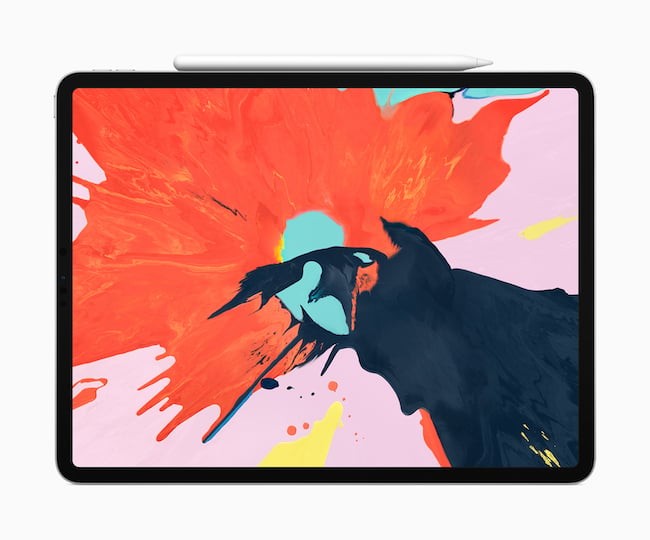
Launched in 2015, the original iPad Pro’s chassis was just another refinement of the original 2010 iPad design. A blown-up iPhone / iPod Touch with the all-important single home button which came to accommodate Touch ID. It was distinguished by Apple Pencil and a host of other features, but the family heritage was clear.
The 2018 iPad Pro looks a completely different beast.
There’s no home button, no Touch ID.
The Face ID sensor array is discreetly hidden in a bezel with no notch required.
Cleverly, it will work however you hold it; portrait or landscape. If you cover up the sensor with your hand, a pop-up message appears.
Apple talks about it being its true vision for iPad all along - a single sheet of glass for displaying infinitely malleable software.
But the design is more than that.
The gentle curves and tapered sides which have always characterised the iPad’s underside are gone. The chassis is 15% thinner, but also squared off and more boxy - albeit with curved corners.
It looks a lot more business like.
For the top-end 12.9” model, Apple have kept the screen size and resolution unchanged (2732x2048) but the chassis is smaller due to bezel reduction and feels much easier to handle.
The original 10.5-inch model, which has the same basic chassis as the classic 9.7-inch model but a larger screen size, takes advantage of bezel reduction to increase screen size to 11-inches. So it’s 2388x1668 rather than 2224x1668 with a subtly different aspect ratio.
The underlying screen tech from 2017 appears largely unchanged: IPS LCD DCI-P3 with 120hz ProMotion. As usual, each Pro is individually colour calibrated at the factory. It’s Apple’s finest screens ever, of course, but they didn’t make any case for a significant leap forward apart from using the same Liquid Retina display technology introduced with iPhone XR, which allows for it getting closer to the edges and particularly into the rounded corners.
Chassis and Face ID aside, the main differentiator over the previous gen is the A12X bionic chip. This year’s iPhones have already demonstrated stunning performance with the standard A12 chip, but as is customary the iPad variant dials it up.
Comparing the A12X to the A12, it’s 10 billion transistors compared to 7 billion.
As a reminder, the 2017 iPad Pros used A10X chips, while the 2018 models go direct to A12X which is based on this year’s iPhone hardware and is amongst the first to commercialise 7nm. This also mean they’re the first iPads to get the Neural Engine and it’s specced the same as on iPhone with up to five trillion operations per second available for AI type operations - including Smart HDR for the iPad’s cameras, just as on this year’s iPhones. However, due to the reduced depth, there is now a rear camera bump and Optical Image Stabilisation has been removed.
RAM is apparently unchanged at 4GB, although it’s reported that 1TB model gets 6GB for unknown reasons. Apple doesn’t highlight RAM figures due to iOS being so efficient compared to rival OS, but even so if 6GB is confirmed then you might wonder at the potential advantages for say editing 4K with Lumia Fusion. This potential RAM differential should be clarified soon as units ship.
As rumoured, Lightning has been replaced by USB-C. This isn’t Thunderbolt 3 as you’d find on a MacBook however, it’s USB 3.1 Gen 2 with 10Gbit transfers. In the demo room, Apple were showing off the benefits of USB-C with cameras being plugged directly into the iPads to browse and transfer photos. No need for dongles. Another application is DisplayPort with iPad Pros able to drive up to a 5K external monitor. Obviously drivers are thin on the ground currently, so printers and storage devices weren’t highlighted, let’s say. In time, developers can add functionality to their apps for different applications. The iPad Pros can also be used to charge a connected iPhone.
The 3.5-inch headphone jack is gone however and there’s no included USB-C dongle, that’s an extra for £9. Or just Bluetooth, of course.
Pricing starts at £769 64GB 11-inch model and £969 for the 12.9 inch model. iOS in tandem with iCloud is highly storage efficient, but 64GB on such premium machines is low and predictably there’s no 128GB model, you have to jump to 256GB (£919/£1119) with premium 512GB (£1119/£1319) and 1TB (£1519/£1719) options. Adding cellular costs another £150, while AppleCare is £129 (non-warranty repairs have increased in price as well). Unsurprisingly, the 2017 10.5-inch model is retained in the line-up with pricing starting at £619 for 64GB.
Pro Software?
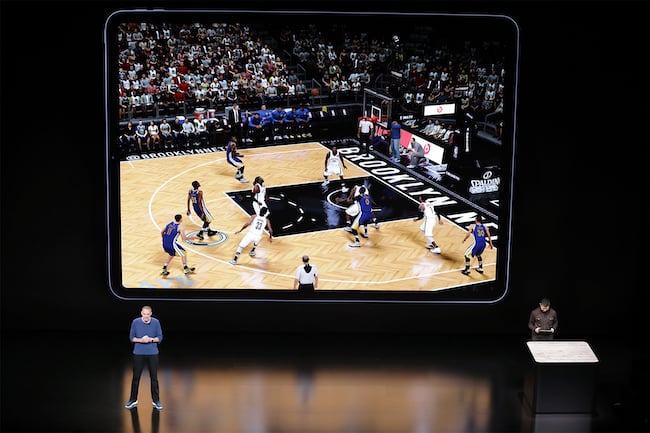
To demonstrate the potential of this powerhouse we had a glimpse of Assassin’s Creed (Rebellion not Odyssey needless to say) and, far more impressively, NBA 2K running at 60fps on a Retina screen; according to the developer, 6 million pixels with no upscaling.
Basketball’s contained court and limited number of players makes it a good graphics showcase sport, but the convincing animation of the crowd and the astonishing detail on the players, with each player in the NBA individually modelled, was genuinely impressive. In fact, Apple claims 2018 iPad Pros deliver graphics performance comparable to Xbox One S within a 94% smaller case.
Apple will need to round up far more console-class games than they have now to trouble Sony or Microsoft, but it’s worth noting the latter has next gen plans for game streaming and mobile compatible joypads that could usefully augment iPad gaming options.
In terms of pro software for pro hardware, we had mention of AutoCAD bringing its full engine to iPad and a scant few other apps before the main event: Adobe PhotoShop running the full desktop engine on iPad with a 3GB PSD and over a hundred intricate layers being manipulated at lightning speed. Using the new Apple Pencil, a double tap could zoom into the eye of an almost invisible bird and then out to the full image in an instant. The PSD was optimised for a 9ft by 9ft poster, but we also saw it being recreated in Augmented Reality using Adobe’s Project Aero. This opened the picture into layered 3D with animated butterflies fluttering within in AR, superimposed over a camera view of the audience.
Even though Adobe had already announced PhotoShop for iPad, this demo was a truly impressive statement of what the new iPad Pros can do (given developer buy-in.) Apple also implied there’s more to come with reference to collaboration with Adobe on future next generation apps. Adobe Premiere for iPad?
Apple briefly talked up the iPad Pros as the ultimate devices for Augmented Reality, but there wasn’t much time given to proving this on stage.
According to the company, the new iPad Pros are more powerful than 92% of laptop PCs shipping this year and extrapolating from the performance of the iPhone’s A12 makes this entirely believable. Apple also promoted the iPad range in total (including standard iPad) as the single biggest selling portable computer range this year.
Both of these things are likely true, but the overall impression is a little misleading. The Pro models are still a niche within a niche. Right now, the 2018 iPad Pros are a stellar leap forward in performance and design without yet offering anything uniquely new as a customer benefit over last year’s models. Developers need time to catch up to Pro potential, but that’s what we always say.
iOS has moved ahead in leaps and bounds with file support flexibility via the Files app and this year’s debut of Shortcuts for sophisticated automation. There are still weak spots, however.
The new iPads, like the old, currently mirror the display onto the monitor so you typically get a 4:3 output with thick borders on a widescreen monitor. Only in display mode, with a video or a PowerPoint, will it go full screen. The door is open to developers to make more of this functionality in future, which they may as USB-C to a monitor is easier than the previous dongle-based approach. However, even with this potential full screen support the iPad Pro is still lacking a mouse-driven desktop experience. iOS 13 could add this or possibly even Face ID gesture-based support.
If you’re buying the iPad Pro as the indisputably ultimate pure tablet available today, this might not matter so much. However, when comparing laptop-priced iPad Pros against, say, a new MacBook Air or a Windows PC hybrid such as the Surface laptops, it’s an issue needing resolution.
Pro Peripherals, Pro Pricing
For both models, new optional Apple Smart Keyboards use a different approach with a Folio design to protect front and rear, plus two viewing angles rather than just one on previous model.
The Smart Connector which allows for I/O and power is also moved to the rear of the iPad. Other than this they look much the same as the previous gen; lightweight but robust with a fabric covering. The 11-inch model is £179, the 12.9 £199. So yes, another price increase.
There’s also a new Apple Pencil and, surprisingly, it only works with the new iPads. The previous gen Apple Pencil also only works with the previous generation Pros and 2018 iPad. This is somewhat mystifying, but at least the new Apple Pencil solves significant issues with the original: it attaches magnetically to the iPad Pro and charges wirelessly. You can also double tap on its side to change tools; e.g. to switch from pen mode to eraser. This depends on the software to specify for the individual app.
Other than this, there don’t appear to be any differences in performance such as responsiveness and accuracy, however the price takes a jump from £79 to £119.
At this point, a reminder that however cool the Apple Pencil looks, for simple mark-up and basic notes, a £10 or less stylus from Amazon can serve just as well.
MacBook Air 2018
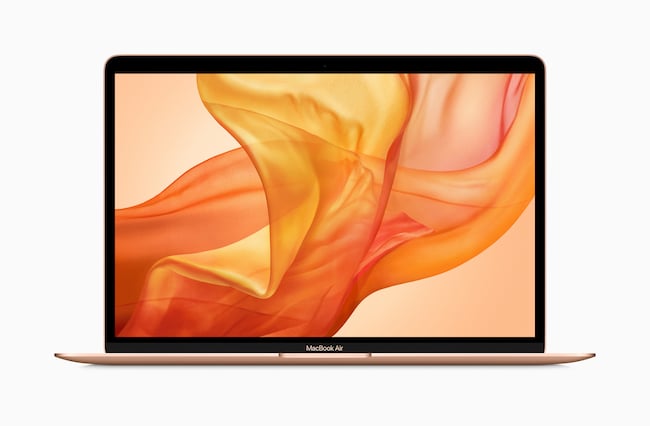
Perhaps the most shocking thing about the new MacBook Air is how familiar it is.
Apple’s original wedge-shaped, ultra-thin design is one of the most successful and influential in laptop history.
Even so, it’s a little surprising Apple has thoroughly re-engineered and rethought every detail of this crucial laptop design while keeping it looking so much the same.
While ‘Air’ originally denoted ultra-light design, the 2018 model shaves down some dimensions but lives up to the name purely from a branding perspective. It’s comparable to BMW’s reboot of the Mini as a thoroughly modern car - the objective is to be practical and sensible in a way the original Air absolutely wasn’t at its debut.
What this means is we finally a get a Retina 13.3-inch class screen with modestly reduced bezels. It’s not edge-to-edge like some competitors, but with a black bezel it gives that impression while being more practical and robust. It’s far sharper than the old model with 48% more colours, an excellent sRGB display that’s not going to outshine a MacBook Pro or an iPad Pro.
For biometric security, Face ID would’ve been nice but we instead get Touch ID and no Pro-style OLED Touch Bar. There’s also a T2 Security Chip. The Force Touch Trackpad is 20% larger than the old one and remains one of the outstanding plus points of Apple’s laptops.
The keyboard is a third-generation butterfly design similar to latest MacBook Pro designs. It’s quieter and apparently more reliable than the second gen. For the Pro models, reliability is critical since replacing the keyboard meant replacing the entire upper part of the MacBook Pro (battery, trackpad and speakers) at considerable expense. It’s not yet clear if this is the same with the new Air, but should be a key factor when considering AppleCare.
In terms of ports, there’s a pair of Thunderbolt 3 (USB-C) ports than can charge the MacBook and also connect displays, storage etc. It’s a welcome improvement over the 12-inch MacBook which made do with a single port. There’s also a headphone socket.
Speakers are enhanced with 2x more bass, 25% more volume and there’s a three-microphone array to make FaceTime HD calls clearer and should allow Siri to understand your commands more easily.
One of the most emphasised marketing points with the Air is environmental with it using a new custom aluminium alloy which basically allows for it to use offcuts from iPad Pros etc. The stage presentation made this point more elegantly, but this environmental friendly dimension was stressed as a key sales point.
Pricing starts at £1199 for a 1.6Ghz Dual-Core Intel i5 8th generation processor with 3.6GHz Turbo Boost up to 3.6Ghz and 128GB Storage, 8GB of 2133MHz LPDDR3 memory and 128GB storage. RAM can be doubled for £180 more while storage goes up to 1.5Tb for £1200! While Apple didn’t specify the exact processor part number, it looks to be a power efficient, 7 Watt Amber Lake chip that no doubt helps with 12 hours web browsing battery life and 13 hours with iTunes movies.
There’s a choice of gold, silver and space grey finishes, while the original 1.8Ghz fifth generation i5 MacBook is inexplicably retained in the line-up for £949. Don’t buy that one.
In Conclusion
For creative professionals, Apple re-affirmed its commitment not just in mood messaging with the NYC setting and creative banners, it followed up on the 2017 iMac Pro with more hardware specified (and priced) to appeal to their needs.
In fact, there was so much being launched some of it didn’t even make the presentation. Available to custom order now with new MacBook Pros are AMD Radeon Pro Vega graphic options with up to 60% faster performance for applications such as video editing. There’s also a powerful new Blackmagic eGPU with Radeon RX Vega 56 graphics processor, 8GB of RAM, a massive array of ports include two Thunderbolt 3, four USB 3, HDMI 2.0 and Display Port 1.4. It will be available to order from late November for £1,200 - which isn’t cheap, but will likely be quiet in operation.
The eGPU is compatible with any Thunderbolt 3 Mac, including the newly launched Mac mini and MacBook Air that overall look solidly dialled into customer requirements.
For iOS, the iPad Pros deliver almost everything one could ask for in hardware engineering while redoubling the challenge to developers to deliver on that promise.
This was an impressive set of announcements from Apple and the stage is well set for 2019 and the long-awaited new Mac Pro, plus we expect some major steps forward with iOS 13.
Tags: Technology


Comments